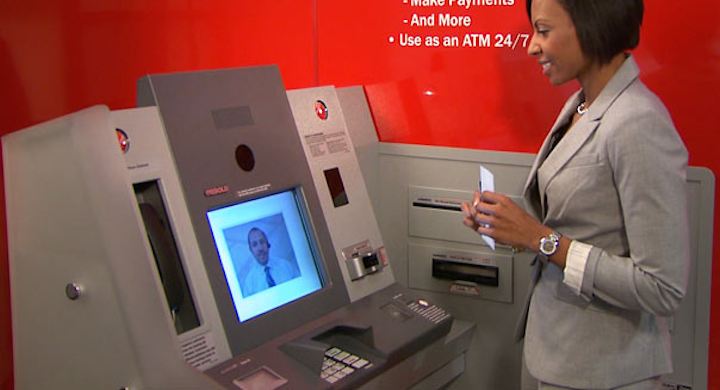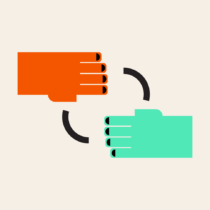Bank ATMs Are Getting a Face Lift: A New Customer Experience in Retail Banking

When Chemical Bank installed its very first ATM in 1969, it dispensed a fixed amount of money when a user inserted a special card. It was the first step in performing non-profitable financial transactions without the need for a human bank teller. According to ATMIA (ATM Industry Association), there are now roughly 3 million ATMs installed in banks, bars, and gas stations around the globe.
Most banks set up ATM divisions to operate as business units with their own profit centers – tracking and managing performance indicators like fees and usage separately. Banks don’t turn a profit by making change from a hundred dollar bill, so ATMs replaced the non-profitable tasks tellers sometimes have to do. Increasingly, as consumers, banks have moved customers over to online channels and ATMs for basic interactions. In turn, they have trained branch staff to take on a more sales focused or “Universal Teller” role designed to deliver a more consultative experience and drive more income.
Virtual Tellers and the Advent of the
Self-Service Banking Kiosk
In his book, Steve Jobs recounts the story of handing his iPad to an illiterate child in a rural part of South America and observing the ease with which the child intuitively navigated the experience. That level of seamless technological interaction is making its way into the banking world with the growth of the banking kiosk (also referred to as in-lobby-teller-assisted self-service terminals). Banks continue to experiment with different customer interfaces on the new machines in order to create an intuitive experience that requires no instructions.
For example, you might receive a prompt if your transaction moves too slowly. Or to experiment with cross-selling, the machine might ask if you’re interested in a car loan.
New banking kiosks like this one from Bank of America (christened Automated Teller Assists [ATAs]) will allow bank customers to speak with a human teller, make loan and credit card payments or cash checks, and even receive exact change. In order to effectively replace a human interaction, ATA’s (or the generic banking kiosk) have to be smart, work in multiple environments, guarantee security, and ensure accessibility. These aren’t machines you just buy and plug into a wall.
Trends in ATM Design and Usage
NCR Kalpana…Diebold 9900…MX 5200SE.
These names may sound like next-generation medical scanners, but they’re actually the latest products from the big three ATM manufacturers (NCR, Diebold and Hyosung) that many banks are piloting. But, just because there are three models, doesn’t mean you’ll be certain to experience one of three options. In reality, each individual implementation undergoes a high level of customization behind the scenes to align to a bank’s goals. There’s a lot more to it than ordering an ATM machine from a manufacturer and installing it.
Things you don’t even notice.
BMW sound designers spend months testing different materials to use in its doors because it wants to have the perfect sound when it shuts. How quickly the door closes and the sound it makes are both part of the BMW brand.
It’s the same for ATMs. Recently, a major bank took us through its research lab where people representing a broad mix of backgrounds, languages and expertise, tested and experimented with customization. When we were there the team was testing different cadences for how the machine receives and returns your card to uncover which motion feels most natural.
On top of that, they were dealing with security concerns, customized software, and testing – all before the new generation ATM was ready to be released.
Ready, Set, Plan, Customize (then Go)
The shift towards customer-centric ATM design represents a sea change in retail banking. This reality has forced some banks to scale back their plans. A lot of banks want to slash costs and capitalize on the shift to mobile banking. That means fewer branches, fewer ATMs, and retraining employees to focus on more profitable activities.
It may seem like a bank can buy a machine from a manufacturer and install it out of the box. The truth is that it takes months of design planning, prototyping, and customer research, to customize intuitive machines that fit into elements of your unique customer experience that incorporates a mix of free-standing, in-teller line and through-the wall designs.
As more banks invest in this nascent banking kiosk technology, the industry will continue to experience technological advances that challenge the status quo in order to keep pace with the continual change in consumer behavior.
This article is part of a series on #OldBanking. It symbolizes the paradigm shift in the banking industry from the traditional transactional model of retail delivery to a customer-centric model focused on creating experiences and fostering relationships. Join the conversation by using #OldBanking on Twitter.
If you’re planning on integrating a banking kiosk into your ATM strategy or want to discuss any other aspect of your branded environments, drop us a line to have a conversation at connect@monigle.com.
Kurt Monigle is a Principal and team leader of Monigle’s Environmental Branding practice for over 25 years working with leading banks.



